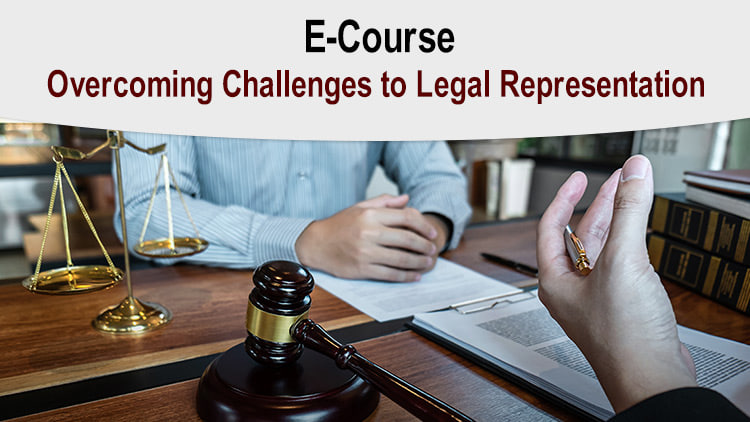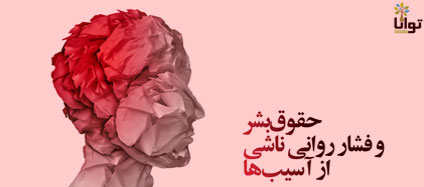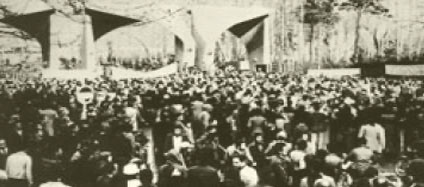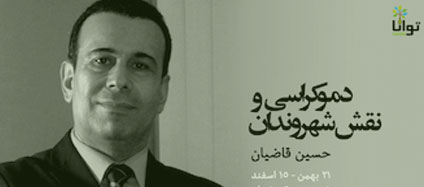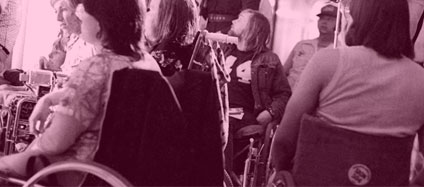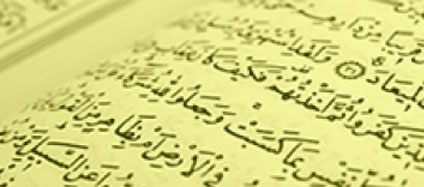Section 1: Objectives
For an activist, civic environment and its possibilities are central to strategizing. Countries offer different levels of freedom for civic organizing. Understanding your political environment and its openings for civic action will help you adapt your objectives to the realities of your situation. This step is essential to understanding what will be possible (and what may not be) given the nature of your political, cultural and social institutions.
In this supplement you will:
Examine how organizing strategies depend on civic freedom
Evaluate your freedom of expression and association
Identify the institutional channels through which to pursue your activism goals
Section 2: Activist Interviews
In Tavaana’s interview with Ivan Marovic, Marovic discusses the civic and political environment in which the Otpor movement operated, and how the movement managed to succeed within these limitations:
Living in Serbia under Milošević was very nasty…Milošević used very brutal methods in order to keep the opposition in check. So he wouldn’t even refrain from murdering people. And we had death squads organized by the secret police, that were eliminating people like, for instance, Slavko Ćuruvija, who was the editor of the biggest newspaper, who dared to write something against the government. Or even Stambolić, who was the president before Milošević, and Milošević was afraid that he may come back to politics, so he decided to eliminate him.
So it was really difficult to have any kind of political organization in Serbia because of these reasons, and this is why we decided not to go for a classic organization, but to go for a movement which doesn’t have a clear leadership, where a leader cannot be singled out and shot or eliminated. And this is why we made a movement which was pretty much horizontal, dispersed, and without any visible leadership.
Tavaana’s interview with student activist Morteza Eslahchi describes the atmosphere on Iranian university campuses as follows:
With Ahmadinejad’s first term as president, the atmosphere became much more repressive, and the state, from the very beginning, did its best to neutralize all independent student institutions. The state withdrew legal licenses for various organizations, thus preventing them from continuing their activities, and we found ourselves struggling for survival. Our publications’ licenses were revoked. The authorities refused us permission to hold our gatherings and carry out our programs.
To put it briefly, the atmosphere was suddenly turned upside down, no one could do anything anymore, and all we could do was to fight back in order to keep the state away from the universities and maintain a certain margin of action, preventing the authorities from establishing a dead and glacial atmosphere on campuses.…We achieved a certain degree of success, meaning that although all Islamic student associations and the Office for the Consolidation of Unity (Daftare Tahkim Vahdat) were officially shut down in a severely repressive campaign, all known figures of these organizations were still present on the campuses and could, somehow, continue their activities, even if it was to a lesser extent. These figures continued their critical engagement against the authorities, trying to accomplish what they could in this regard.
While reviewing these examples, consider the following questions:
What channels did the activists use to communicate their cause and mobilize followers?
What constraints on activism did the activists face?
How did the activists overcome these restraints?
Section 3: Institutional Channels for Activism
As an activist, you operate within the context of a set of laws and state institutions that determine how decisions that affect society are made, and what role citizens can play in influencing those decisions.
Below is an overview of the major institutional channels through which governmental policy may be shaped.
Institutional channels of the state:
Legislative – Work with lawmakers to reform or pass new laws, or become a legislator yourself.
Executive – Work with those who implement the law (governmental institutes).
Judiciary – Seek to have existing laws enforced by the court, or pursue new interpretations of laws.
Other institutional channels
Public events – Engage in events like public protests, such as sit-ins, marches and boycotts, civil disobedience (refusal to obey unjust laws), and the like.
Political parties – Form your own political party, join an existing party, or convince a party to add your issue to their political agenda.
Civil society – Form your own organization, or ally with existing organizations, such as professional, community, or non-governmental associations, or groups oriented towards labor, social services, students, the environment, etc.
Media – Access this channel through articles in newspapers, press releases, press conferences, and interviews with journalists.
Social networks – Build your network of allies and help to raise awareness by creating a Facebook group, posting updates about your activities, and connecting with allies and supporters.
Section 4: Why the Civic Environment Matters
Opportunities and constraints for activists are largely a function of which institutional channels exist through which citizens can express their views and influence the government. It is important for activists to understand how much freedom they have to operate within their country’s laws, and how responsive their governments are to citizens’ concerns and criticism. Activists must continually take the pulse of their country’s politics, their government’s willingness to respond to citizens’ concerns and criticism, and the strength and dynamics of their civil society. They must be sensitive to the reception of their values in society.
When a government is accountable to the people, it is highly motivated to serve their needs and demands for better livelihoods. In such a political context, activism campaigns can more readily influence government policy.
In countries where institutional mechanisms for people to air their grievances to the government are limited, activism is, of course, more challenging. Nevertheless, people in any political context can successfully advocate for positive change. Social change is not always dependent on government policy, and progressive social change is possible even in the most repressive of political environments.
In these repressive regime contexts, the strategies for civic mobilization, awareness raising, and legal reform will be different. Much thought needs to be given to protection mechanisms for leading advocates, and the cultivation of allies and national and international solidarity networks is significantly more important for activism in repressive countries.
Methodology for Evaluating Your Civic Freedoms
To determine how much freedom you have to operate as an activist, and which institutional channels to use, you need to comprehend the building blocks of freedom. What are the freedoms and institutions that enable ordinary citizens to influence how their countries are run?
A number of international organizations have developed methodologies for evaluating the level of civil and political liberties in any country. One authoritative methodology comes from Freedom House, an American nongovernmental organization that has authored a survey of freedom for every country in the world since 1972. They use a survey of questions to rank countries as free, partly-free and not-free.
Click on the link below to view their survey questions, which you can use to assess your own country’s civic environment.
Freedom House Methodology for Evaluating Freedom
Here are Freedom House’s recent reports on Iran:
– Freedom in the World, 2011
– Freedom in the World, 2012
– Freedom on the Net, 2011 (both the general report and the chapter on Iran)
Section 5: Activism in Different Environments
Please read these Tavaana case studies as examples of activism movements in not-free, partly-free and free countries.
Movements in Not-Free Countries
Aung San Suu Kyi and Human Rights in Burma
Ladies in White, the Cuban Human Rights Movement
Movements in Partly-Free Countries
Martin Luther King Jr. and the Civil Rights Movement
Wangari Maathai, The “Tree Mother of Africa,” and Her Green Belt Movement
Movements in Free Countries
Reclaiming Sicily from the Mafia: Rita Borsellino and the Addiopizzo Movement
The 1960s-70s American Feminist Movement: Breaking Down Barriers for Women
As you read these examples, ask yourself the following questions:
How do the goals and strategies of advocates in different states of freedom differ?
What institutional channels did the activists use to pursue change?
How did they decide which mechanisms to use?
How did activists from not-free countries protect themselves against state violence?
How did advocates in free countries benefit from the rule of law and democratic institutions?
What lessons can you draw from these movements?
Section 6: Freedom of Expression and Association
A country’s levels of freedom of expression and freedom of association may be the most critical freedoms in determining how easy it is for civil society activists to build movements and mobilize the citizenry. The Universal Declaration of Human Rights (UDHR), adopted by the United Nations General Assembly in 1948, is the fullest expression of the equality and dignity of all human beings.
The UDHR provides the following statements of the freedom of expression and freedom of association to which all human beings are entitled:
Freedom of Expression – Article 19
Everyone has the right to freedom of opinion and expression; this right includes freedom to hold opinions without interference and to seek, receive, and impart information and ideas through any media and regardless of frontiers.
Freedom of Association – Article 20
1. Everyone has the right to freedom of peaceful assembly and association.
2. No one may be compelled to belong to an association.
Although the Universal Declaration of Human Rights is universal in its principles, certainly not all people enjoy these rights. As you consider how to proceed as an activist, you may find it useful to start by examining more closely the limits to your freedom, particularly for expression and of association. Consider the following questions:
Freedom of Expression
Are journalists free to write on any subject in any way they choose? What subjects are most sensitive? Does the government frequently arrest journalists or close down periodicals?
Does the government control most or all television and radio broadcasting?
Can university professors and students express political opinions without risk to their career or studies?
Do you feel people in your society self-censor when discussing certain political issues, personalities, or history?
Is it a crime to criticize the political leadership of your country and/or the religious establishment?
Can artists, writers, musicians, filmmakers, and artists do as they like, and are people free to listen to any type of music, watch any sort of film, or read any sort of book or magazine? Does the government frequently ban films, music, and books?
Can people access the Internet fully and openly, and do they feel they can contribute their ideas via the Internet without fear of surveillance or censorship?
Freedom of Association
Can people in your society organize peaceful protests around any issue? How easy is it to obtain a permit for a demonstration?
Can people gather in their homes, offices, or public places to discuss any issue without fear of surveillance, intimidation, or arrest?
Can they organize themselves into a group or nongovernmental organization fighting openly for a cause? Are nongovernmental organizations free to operate without fear of arrest or being shut down?
Are independent labor unions legally permitted?
Section 7: Deciding Which Channels to Use
By analyzing your country’s institutional channels for activism, you can determine which channel offers you the greatest likelihood of success and which ones may not be worth pursuing. You can use the general questions below to help you, or if you have time, use a more detailed methodology such as the Freedom House Survey or other surveys in the Resources section of the course. The questions below are taken from the 2005 Freedom House methodology.
POLITICAL RIGHTS
A. Electoral Process
Is the head of state and/or head of government or other chief authority elected through free and fair elections?
Are the legislative representatives elected through free and fair elections?
Are there fair electoral laws, equal campaigning opportunities, fair polling, and honest tabulation of ballots?
B. Political Pluralism and Participation
Do the people have the right to organize in different political parties or other competitive political groupings of their choice, and is the system open to the rise and fall of these competing parties or groupings?
Is there a significant opposition vote, de facto opposition power, and a realistic possibility for the opposition to increase its support or gain power through elections?
Are the people’s political choices free from domination by the military, foreign powers, totalitarian parties, religious hierarchies, economic oligarchies, or any other powerful group?
Do cultural, ethnic, religious, and other minority groups have reasonable self-determination, self-government, autonomy, or participation through informal consensus in the decision-making process?
C. Functioning of Government
Do freely elected representatives determine the policies of the government?
Is the government free from pervasive corruption?
Is the government accountable to the electorate between elections, and does it operate with openness and transparency?
Additional discretionary Political Rights questions:
A. For traditional monarchies that have no parties or electoral process, does the system provide for consultation with the people, encourage discussion of policy, and allow the right to petition the ruler?
B. Is the government or occupying power deliberately changing the ethnic composition of a country or territory so as to destroy a culture or tip the political balance in favor of another group?
CIVIL LIBERTIES
D. Freedom of Expression and Belief
Are there free and independent media and other forms of cultural expression?(Note: in cases where the media are state-controlled but offer pluralistic points of view, the survey gives the system credit.)
Are there free religious institutions, and is there free private and public religious expression?
Is there academic freedom, and is the educational system free of extensive political indoctrination?
Is there open and free private discussion?
E. Associational and Organizational Rights
Is there freedom of assembly, demonstration, and open public discussion?
Is there freedom of political or quasi-political organization? (Note: this includes political parties, civic organizations, ad hoc issue groups, etc.)
Are there free trade unions and peasant organizations or equivalents, and is there effective collective bargaining? Are there free professional and other private organizations?
F. Rule of Law
Is there an independent judiciary?
Does the rule of law prevail in civil and criminal matters? Are police under direct civilian control?
Is there protection from police terror, unjustified imprisonment, exile, or torture, whether by groups that support or oppose the system? Is there freedom from war and insurgencies?
Is the population treated equally under the law?
G. Personal Autonomy and Individual Rights
Is there personal autonomy? Does the state control travel, choice of residence, or choice of employment? Is there freedom from indoctrination and excessive dependency on the state?
Do citizens have the right to own property and establish private businesses? Is private business activity unduly influenced by government officials, the security forces, or organized crime?
Are there personal social freedoms, including gender equality, choice of marriage partners, and size of family?
Is there equality of opportunity and the absence of economic exploitation?
When you have completed your analysis, record your decisions in your activism plan template, where you will identify which institutional channels you will use, and which ones you won’t. You may also need to modify your goals and objectives to take into account what is politically feasible.
Section 8: Summary Questions
As you fill out and complete the Civic Environment section of your personal activism plan, consider the following questions:
What is the civic environment in my country and how will it impact my ability to achieve my vision?
What institutional channels in my country are best suited to my specific activism efforts?
Will I need to adjust my short-term goals and objectives based on political realities?
If and when more freedom exists, how should my approach change?

